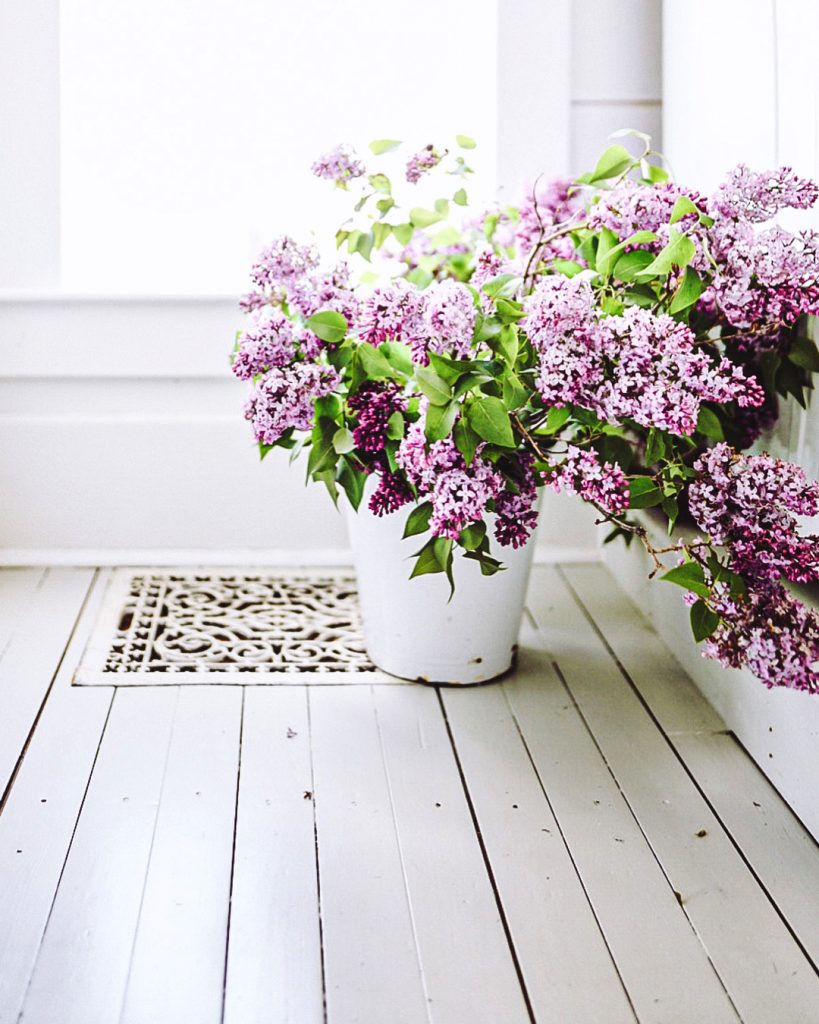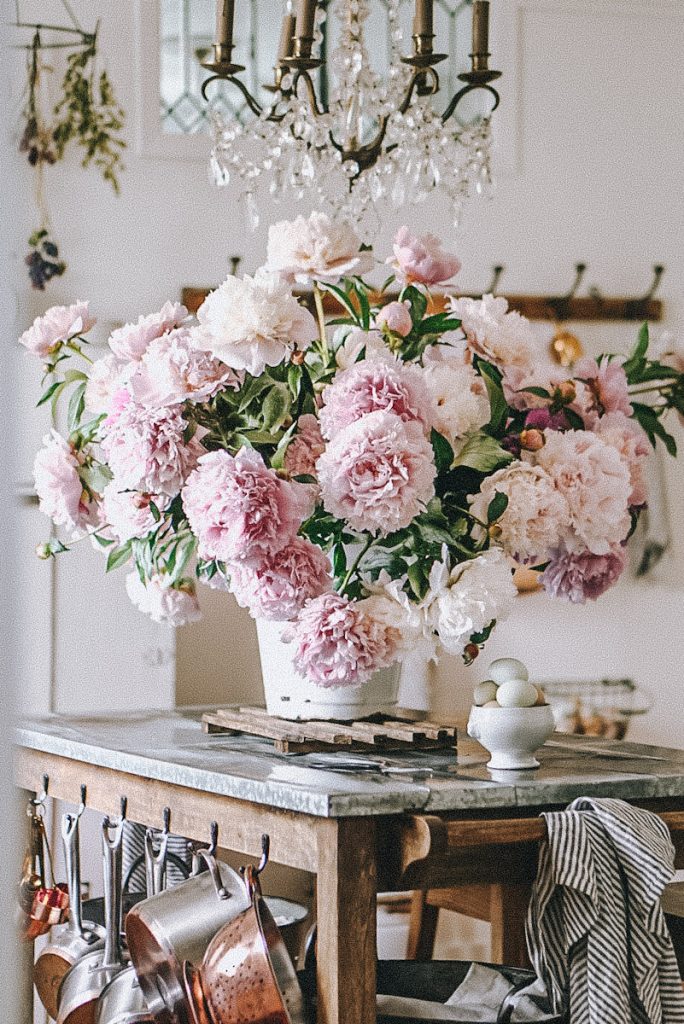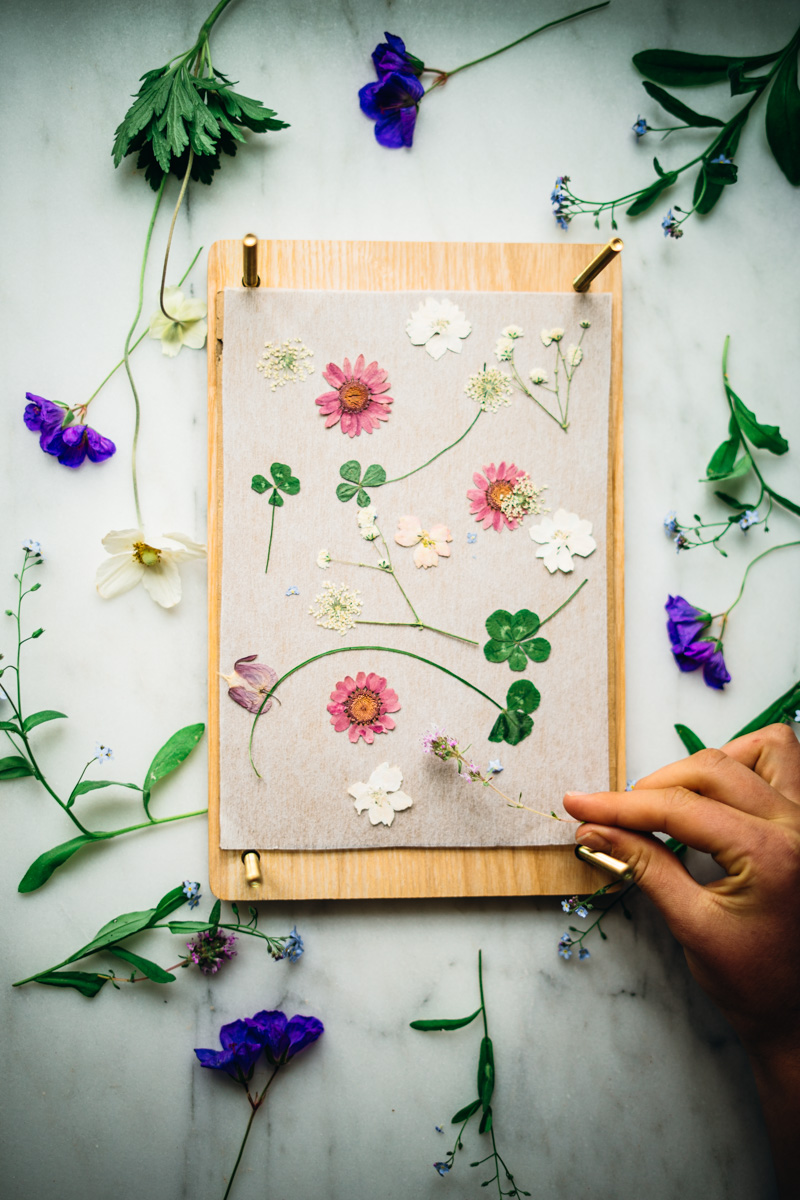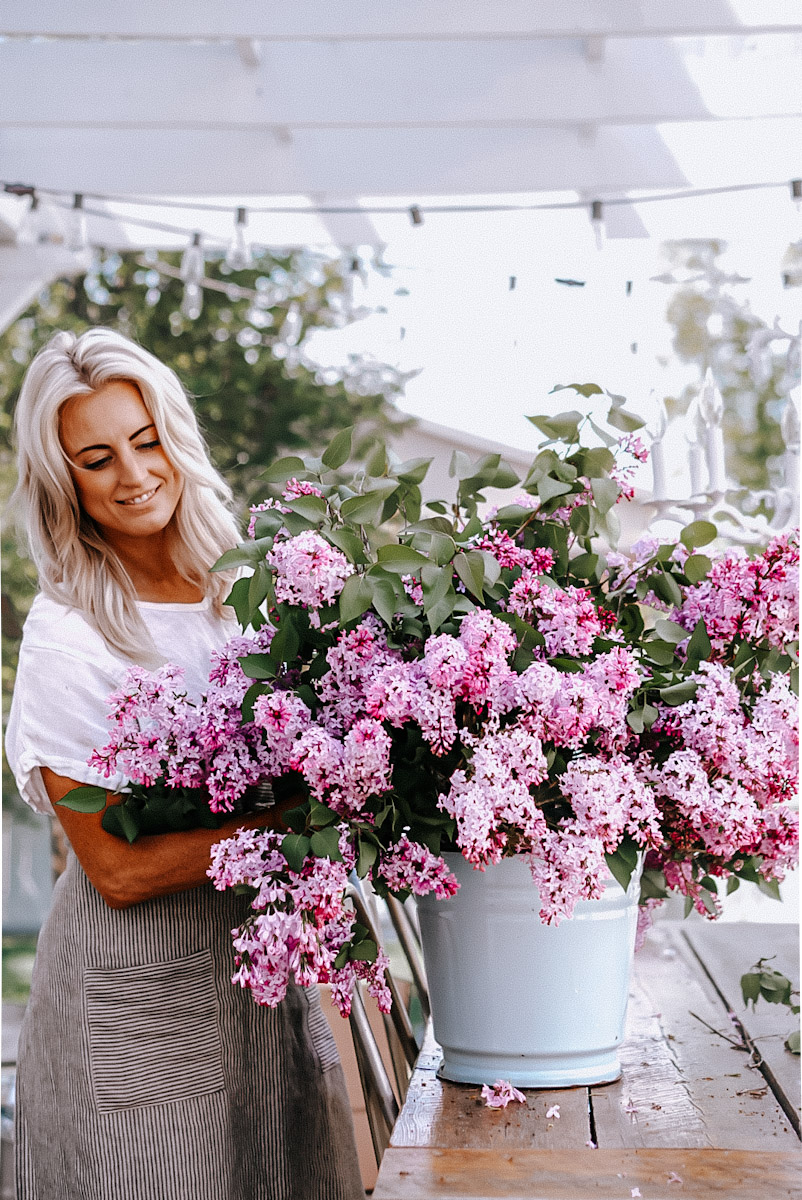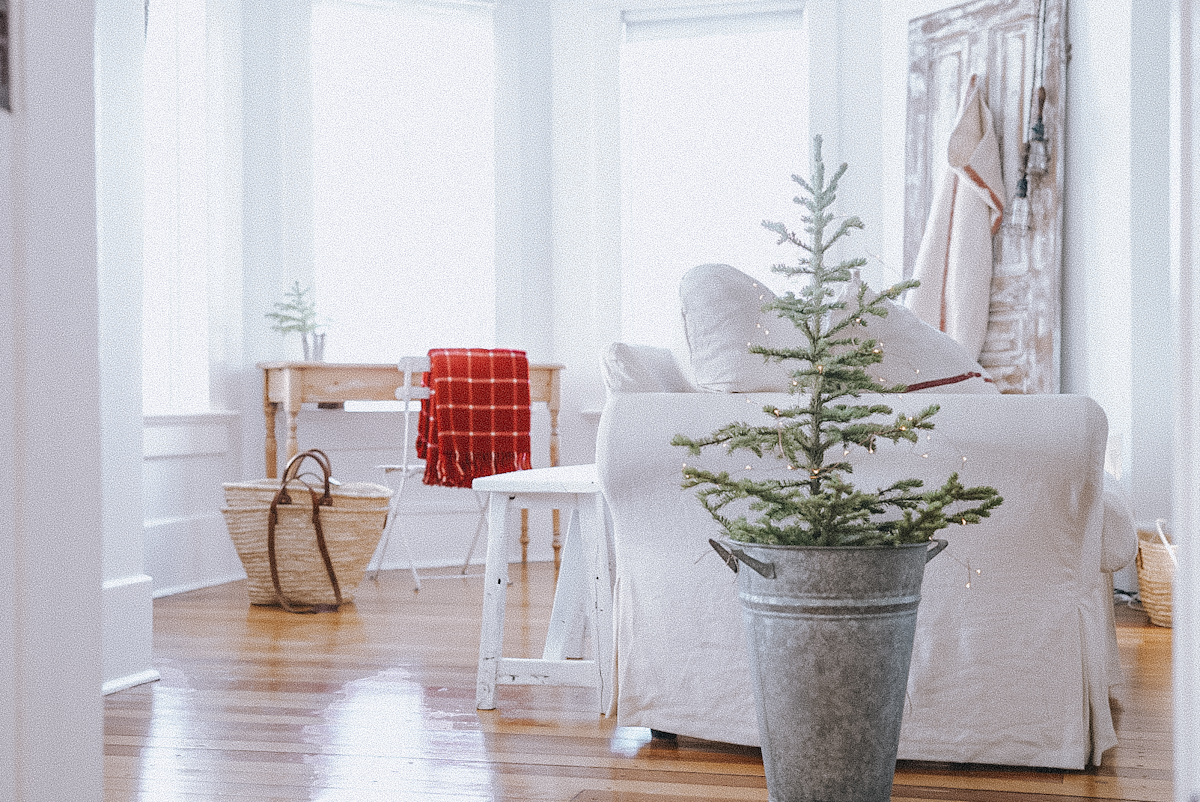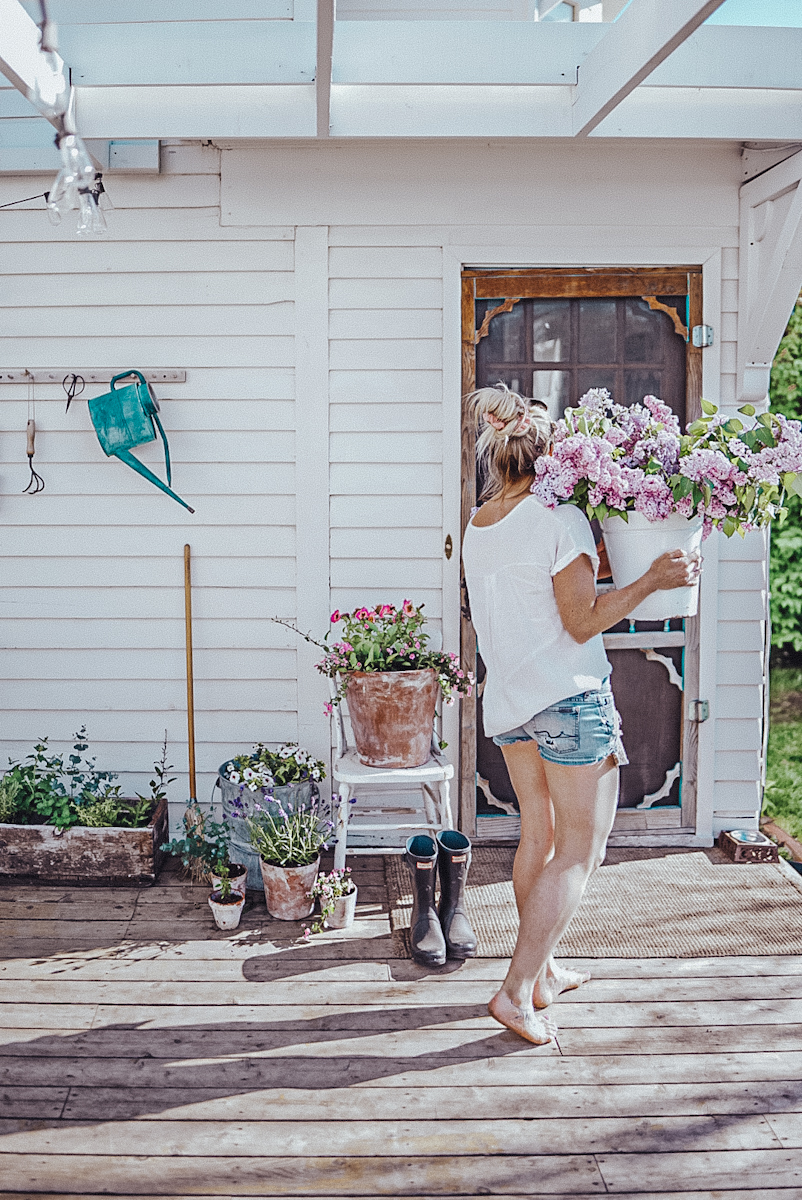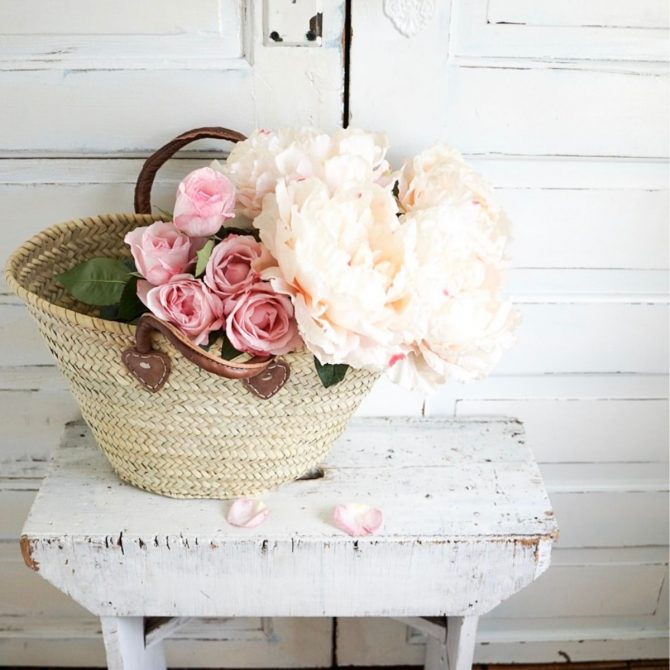This post may contain affiliate links. Please read our full Disclosure Policy.
Ranunculus bouquets are one of the prettiest ways to bring a touch of spring into your home. With their layers of paper-thin petals and dreamy colors, they always feel like a little bit of magic in a vase.
I’ve fallen head over heels for these blooms over the years, but I’ll admit—they can be a little high-maintenance, both to grow in the garden and as cut flowers in your home.! If you’ve ever had your ranunculus wilt before you could fully enjoy them, don’t worry. I’ve gathered all my favorite tips and tricks to help you make a beautiful ranunculus bouquet and keep it looking fresh and beautiful for as long as possible.
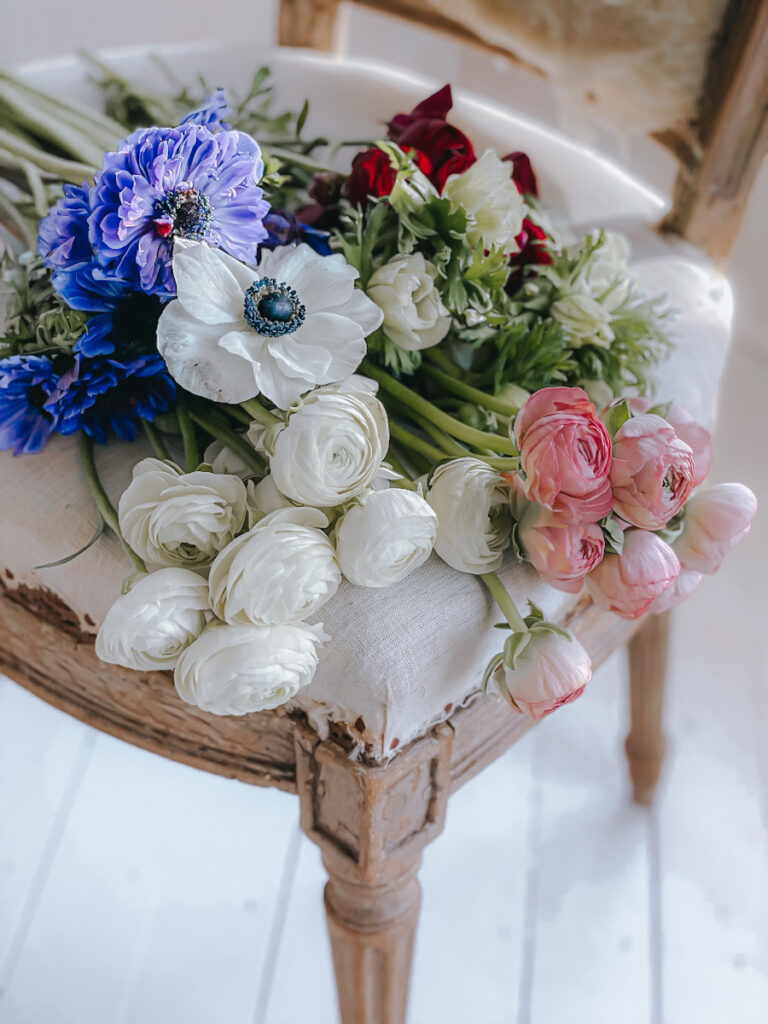
What Makes Ranunculus So Special?
I still remember the first time I spotted a ranunculus bloom at our local flower market. I honestly thought it was a tiny peony at first! The soft, ruffled petals and tight, round shape completely stole my heart. Unlike roses or tulips, ranunculus blooms open slowly and gracefully, revealing layers and layers of petals that almost glow in the light.
They come in a gorgeous variety of colors too—from soft blush and buttercream to vibrant coral and deep burgundy. I tend to gravitate toward the romantic, muted shades, especially for spring and early summer arrangements.
When To Harvest Ranunculus
If you’re lucky enough to grow your own ranunculus, you’ll want to be thoughtful about when you harvest them. I’ve found the best time to cut ranunculus is in the early morning before the sun warms them up too much. You want the stems to be fully hydrated so they hold up in the vase.
Try to choose blooms that are just starting to open. If the petals are still tightly wound but you can see the hint of a spiral forming, that’s the sweet spot! Ranunculus will continue to open beautifully in the vase, and you’ll get to enjoy their full blooming cycle.

How To Cut Ranunculus
Just like with lilacs, clean, sharp pruning shears are key! I always keep a dedicated pair for flower harvesting and make sure they’re sanitized before use.
Here’s how I like to cut them:
- Snip the stems at a 45-degree angle (this helps them absorb water more efficiently).
- Strip off any lower leaves that would sit below the waterline.
- Immediately place them in a bucket of fresh, room-temperature water.

Simple, but effective!
Prepping Ranunculus for a Vase
Before arranging, I let the stems rest in water for at least a couple of hours. This gives them a chance to fully hydrate after being cut. If you’ve just brought them home from a flower shop, go ahead and unwrap them and let them soak for a bit too.
Ranunculus have hollow stems, which can make them a bit delicate. I’ve accidentally snapped a few over the years while arranging them, so I always take a gentle approach—especially when they’re fully open!
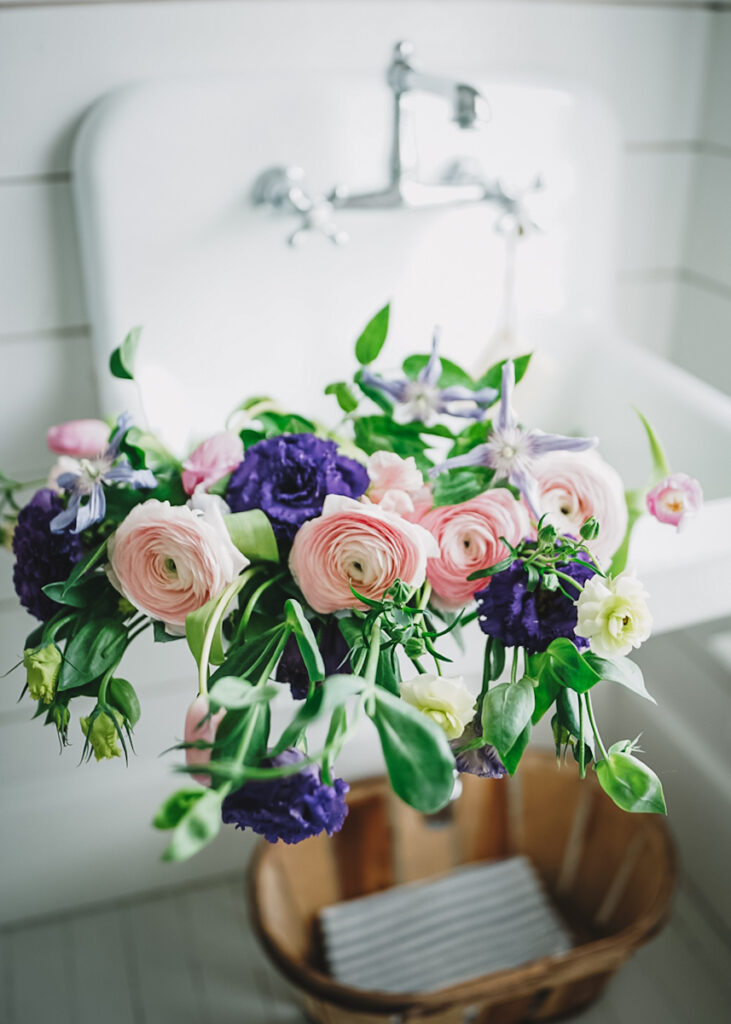
You can also support the stems with floral wire by piercing it just under the head of the flower and gently wrapping the wire all the way around the stem down to the base.
Choosing the Right Vase
I like to keep things simple when it comes to vases. Ranunculus stems are long and wiry, but their blooms can get top-heavy, so a vase with a narrower neck works best to support them. I often reach for vintage glass vases, ceramic crocks, or small enamel pitchers. They offer the perfect balance of charm and support!
Here are a few favorites I use:
- Clear tapered glass vase for that classic French market feel
- Vintage enamel milk jug for a more rustic farmhouse look
- White ceramic vase with a narrow opening to keep stems upright

Sometimes, I even use a flower frog or wrap a bit of chicken wire into a loose ball at the bottom of the vase to help keep everything in place—it’s a game changer!
Creating a Ranunculus Bouquet
Once the vase is ready and the stems are hydrated, it’s time to start arranging! This is my favorite part. I usually begin by choosing a color palette and deciding if I am going to include any other flowers or greenery with the ranunculus.
A lot of the time, I love to only use ranunculus on their own. Still, occasionally I will use a base of greenery—something soft and wispy like eucalyptus or dusty miller, which is always pretty to use as filler.
Then I begin to layer in the ranunculus, one stem at a time. I like to mix heights, placing some blooms higher and others nestled lower to create that romantic, overflowing look. Be sure to turn the vase as you go to make sure it’s looking balanced from every angle.
And don’t be afraid to add in a few complementary blooms! Ranunculus pair beautifully with:
- Sweet peas
- Peonies
- Garden roses
- Anemones
- Feverfew or Queen Anne’s Lace
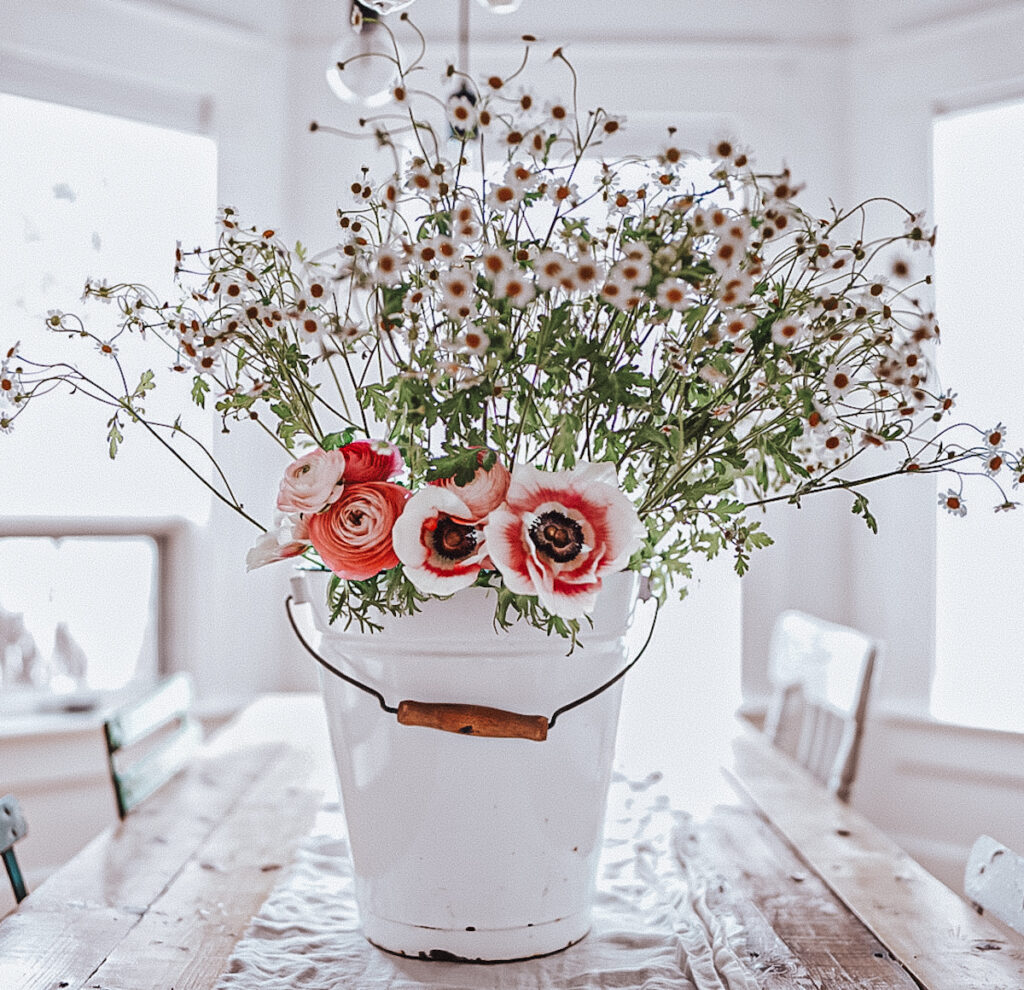
Keeping Your Ranunculus Bouquet Fresh
Ranunculus may not last forever, but there are definitely ways to extend their vase life and enjoy them longer. I have had these beauties last almost two weeks in a vase, when cared for properly!
Here’s what I do:
1. Keep Them Cool
Ranunculus are like me on a hot day—they wilt fast! I keep my arrangements away from direct sunlight and any heat sources. A cool room with soft, indirect light is ideal.
2. Change the Water Often
Every two days, I empty the vase, give it a quick rinse, and refill it with fresh water. Don’t forget to re-trim the stems at an angle each time, too. This keeps the water flowing and reduces the chance of bacteria building up.
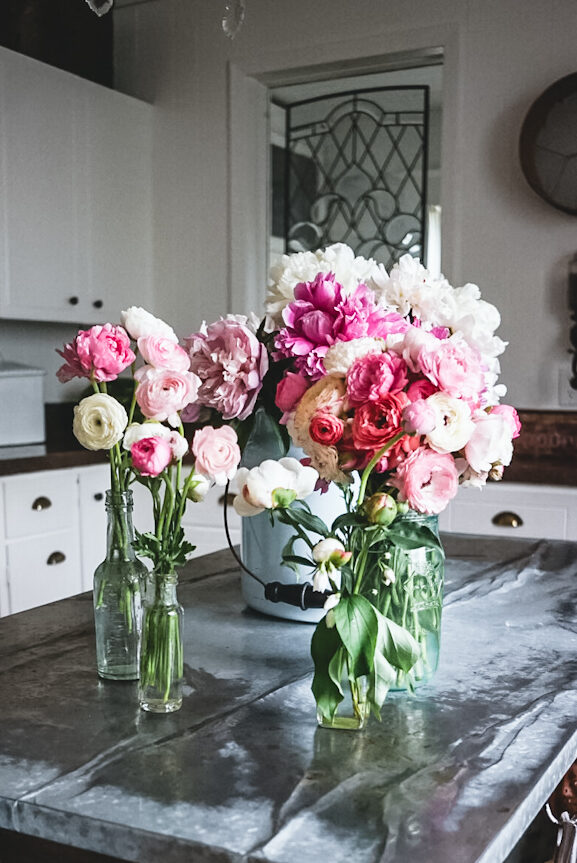
3. Use Flower Food
Store-bought floral preservative works great, but if you’re in a pinch, a homemade version does the trick. I mix:
- 1 quart of water
- 2 tablespoons of sugar
- 2 tablespoons of white vinegar or lemon juice
This gives the blooms nourishment and helps keep the water clear.
4. Mist Them Lightly
If your home is on the dry side, give your ranunculus a gentle mist every now and then. I keep a little glass spray bottle under the sink just for this!
How To Revive Droopy Ranunculus
Sometimes, despite our best efforts, a few stems start to droop. When that happens, I don’t give up on them right away!
One trick that often works is to re-cut the stems under water (so they don’t take in air) and let them soak in cool water for a few hours. You can also wrap the stems in paper and place the bouquet in a cool dark room or fridge overnight. The blooms sometimes perk right back up in the morning!
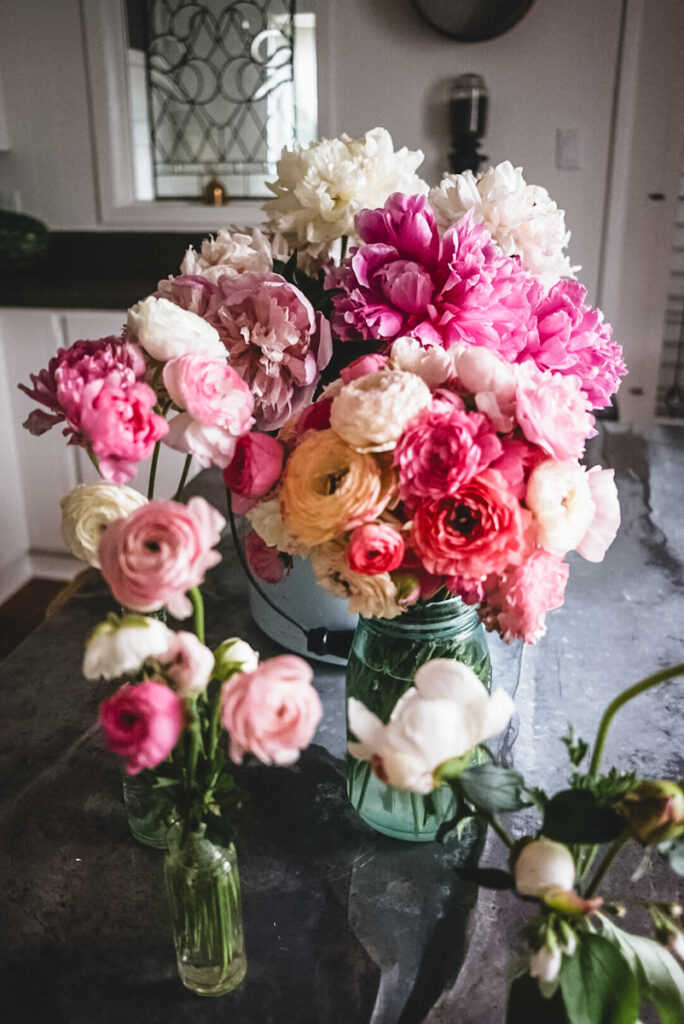
Reader Questions
Typically, fresh-cut ranunculus will last anywhere from 5–7 days in a vase if properly cared for.
Yes! Always remove any leaves that will sit below the waterline to prevent bacteria buildup and prolong the vase life of your bouquet.
Absolutely! Ranunculus grow well in containers, as long as they get plenty of sunlight and well-drained soil.
More Fresh Flower Care
If you loved this ranunculus bouquet tutorial, be sure to check out:
- How To Arrange Tulips In A Vase
- How To Make Roses Last Longer
- How to Create Beautiful Peony Flower Arrangements
- 11 Spring Blooms To Grow For Cut Flowers
- Lilac Bush Care Guide
Pin this post for later or share it with a flower-loving friend!

